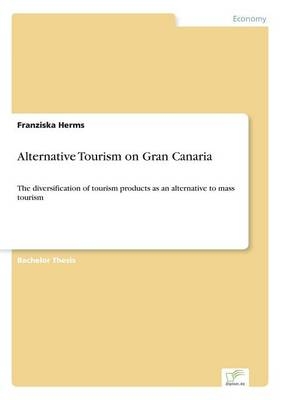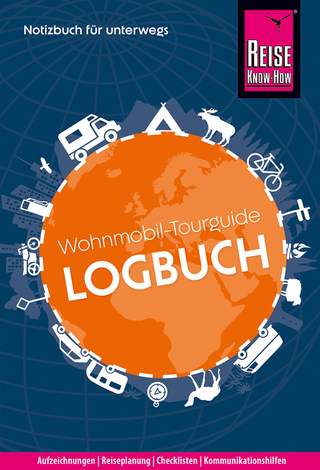
Alternative Tourism on Gran Canaria
The diversification of tourism products as an alternative to mass tourism
Seiten
2006
diplom.de (Verlag)
978-3-8386-9281-4 (ISBN)
diplom.de (Verlag)
978-3-8386-9281-4 (ISBN)
Bachelor Thesis from the year 2005 in the subject Tourism, grade: 1,5, Stralsund University of Applied Sciences (Wirtschaft, Studiengang Leisure and Tourism Management - Bachelor), language: English, abstract: Inhaltsangabe:Abstract:
When thinking about the island of Gran Canaria hardly anyone has the image of endless green and yellow flushing mountains, little traditional colourful villages, undiscovered wine-cellars and hidden cultural treasures in mind. But this may change in the future, as Gran Canaria is on its way to a new tourism development, in search for alternative tourism.
In recent years, there has been a rapid rise in interest for alternative forms of tourism, which are frequently presented as alternatives to traditional mass tourism. Factors responsible for the enhanced awareness include a greater awareness of the environmental impacts of tourism, a growing demand from tourists for new experiences and economic development policies. Today leisure and tourism are more than just elements in social life, but also indicate the individual's position in society. People are looking for sporting challenges like biking, climbing or rafting, or want to collect experience of life inside foreign cultures.
On Gran Canaria alternative tourism expresses the alternative to the island s mass tourism. Nearly three million visitors have arrived annually on the island, but within the last years these numbers are decreasing constantly. An action out of this development was the implementation of a diversification policy, while focusing on other tourism resources Gran Canaria can present.
The island offers much more than only sandy-white beaches and crystal clear water all year long. These new tourism products focus on the natural resources of the island in its interior, where the original life of indigenous people still can be witnessed. Products like rural tourism, activity tourism or golf tourism are becoming here more and more importance.
Until now, only La Gomera and El Hierro are known for their alternative vacation offers within the Canary Islands. But this may change, as the island opens its doors for a new type of traveller trough a very diverse tourist offer than the island was known for since years. There have been many ups and downs in the tourism development of the island in the last years, but it seems like if the island learned from its mistakes in the past and found a different way for its future tourist development. A new age of tourism is about to come for Gran Canaria.
The objective of this paper is to introduce the reader to the term alternative tourism by portraying the particularities of this kind of tourism and show off the overall shape of alternative tourism, which can be found in chapter two.
The island of Gran Canaria was chosen as it is a mass tourism destination, which tries to change its course of tourism to a more sustainable tourist development. A presentation of the destination, with its history, its economical and environmental features and its tourism development from the beginning until today, can be examined in chapter three to five.
An analysis of the introduction of new tourism products, its possible impacts and the likely future prospects of those products on the island were accomplished in chapter six. The main questions hereby were, if the development of alternative tourism products can be successful in the long run and if they can replace the traditional tourism segment, as Gran Canaria started its diversification policy to become more independent from its sun and beach segment.
For obtaining reliable information this paper has been written on the island of Gran Canaria. Through close contact with the Tourist Board of Gran Canaria and other alternative tourism associations an assembly of confidential information was achievable. Other information was employed through secondary and primary research. The secondary dat...
When thinking about the island of Gran Canaria hardly anyone has the image of endless green and yellow flushing mountains, little traditional colourful villages, undiscovered wine-cellars and hidden cultural treasures in mind. But this may change in the future, as Gran Canaria is on its way to a new tourism development, in search for alternative tourism.
In recent years, there has been a rapid rise in interest for alternative forms of tourism, which are frequently presented as alternatives to traditional mass tourism. Factors responsible for the enhanced awareness include a greater awareness of the environmental impacts of tourism, a growing demand from tourists for new experiences and economic development policies. Today leisure and tourism are more than just elements in social life, but also indicate the individual's position in society. People are looking for sporting challenges like biking, climbing or rafting, or want to collect experience of life inside foreign cultures.
On Gran Canaria alternative tourism expresses the alternative to the island s mass tourism. Nearly three million visitors have arrived annually on the island, but within the last years these numbers are decreasing constantly. An action out of this development was the implementation of a diversification policy, while focusing on other tourism resources Gran Canaria can present.
The island offers much more than only sandy-white beaches and crystal clear water all year long. These new tourism products focus on the natural resources of the island in its interior, where the original life of indigenous people still can be witnessed. Products like rural tourism, activity tourism or golf tourism are becoming here more and more importance.
Until now, only La Gomera and El Hierro are known for their alternative vacation offers within the Canary Islands. But this may change, as the island opens its doors for a new type of traveller trough a very diverse tourist offer than the island was known for since years. There have been many ups and downs in the tourism development of the island in the last years, but it seems like if the island learned from its mistakes in the past and found a different way for its future tourist development. A new age of tourism is about to come for Gran Canaria.
The objective of this paper is to introduce the reader to the term alternative tourism by portraying the particularities of this kind of tourism and show off the overall shape of alternative tourism, which can be found in chapter two.
The island of Gran Canaria was chosen as it is a mass tourism destination, which tries to change its course of tourism to a more sustainable tourist development. A presentation of the destination, with its history, its economical and environmental features and its tourism development from the beginning until today, can be examined in chapter three to five.
An analysis of the introduction of new tourism products, its possible impacts and the likely future prospects of those products on the island were accomplished in chapter six. The main questions hereby were, if the development of alternative tourism products can be successful in the long run and if they can replace the traditional tourism segment, as Gran Canaria started its diversification policy to become more independent from its sun and beach segment.
For obtaining reliable information this paper has been written on the island of Gran Canaria. Through close contact with the Tourist Board of Gran Canaria and other alternative tourism associations an assembly of confidential information was achievable. Other information was employed through secondary and primary research. The secondary dat...
| Sprache | englisch |
|---|---|
| Maße | 148 x 210 mm |
| Gewicht | 173 g |
| Themenwelt | Reisen ► Kartenzubehör / Sonstiges |
| ISBN-10 | 3-8386-9281-0 / 3838692810 |
| ISBN-13 | 978-3-8386-9281-4 / 9783838692814 |
| Zustand | Neuware |
| Haben Sie eine Frage zum Produkt? |
Mehr entdecken
aus dem Bereich
aus dem Bereich
Buch | Hardcover (2024)
Reise Know-How (Verlag)
14,95 €
